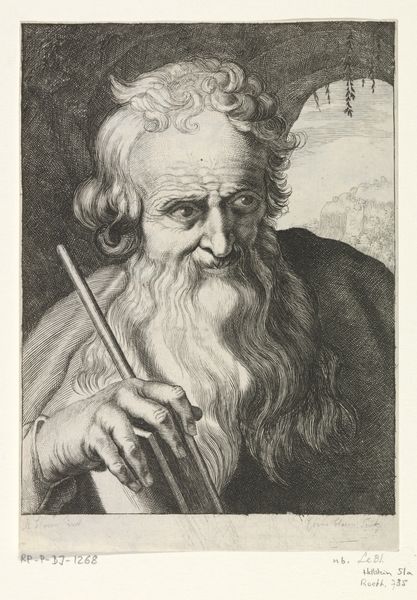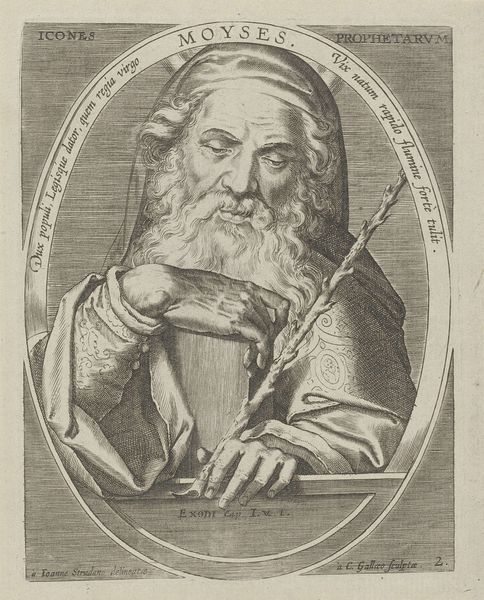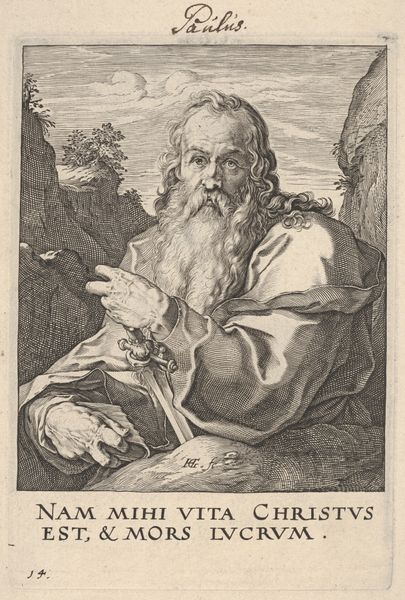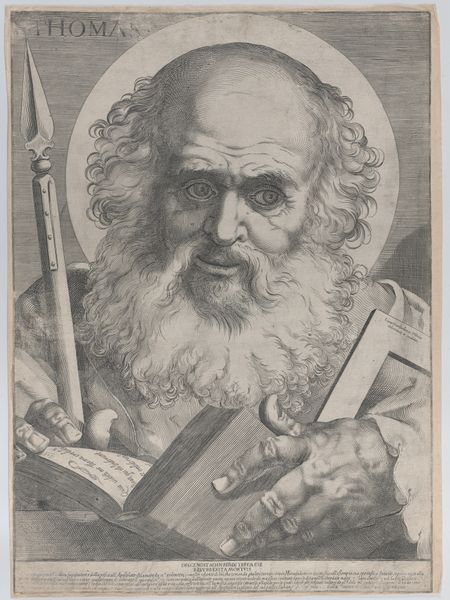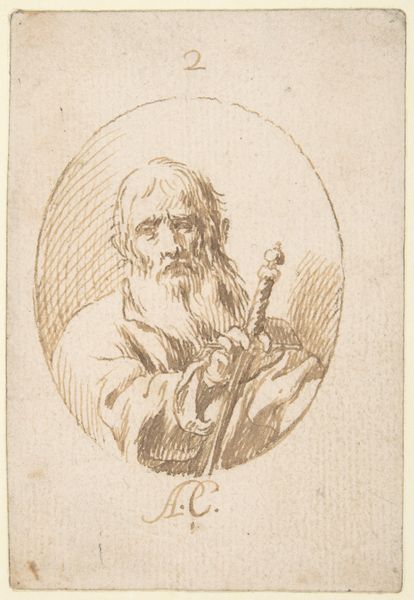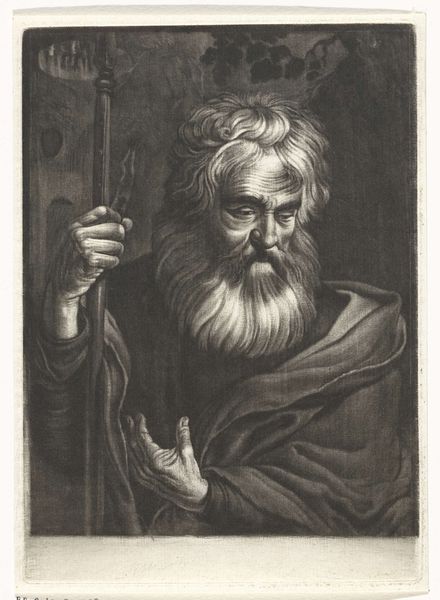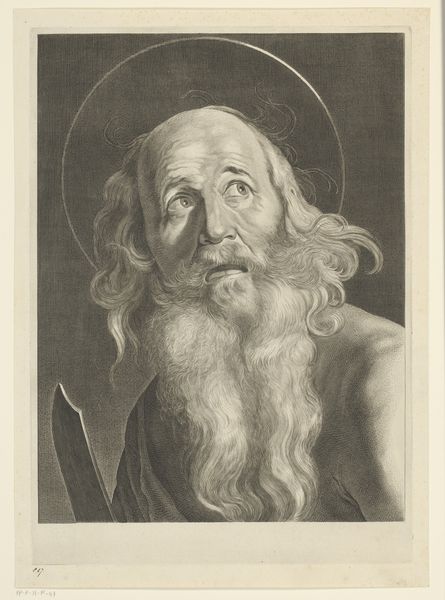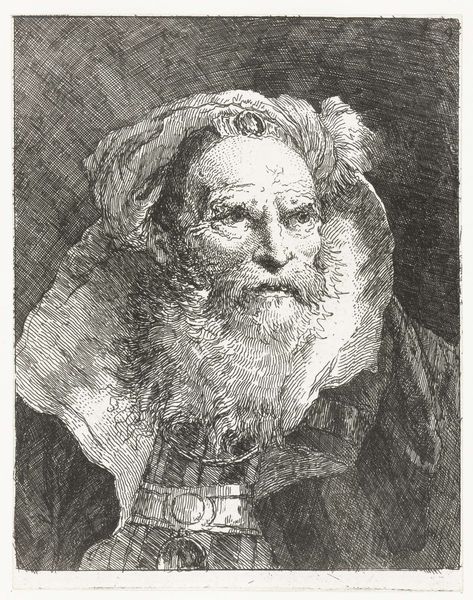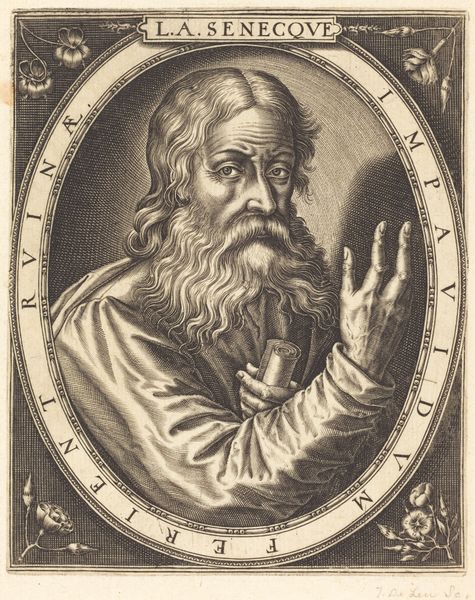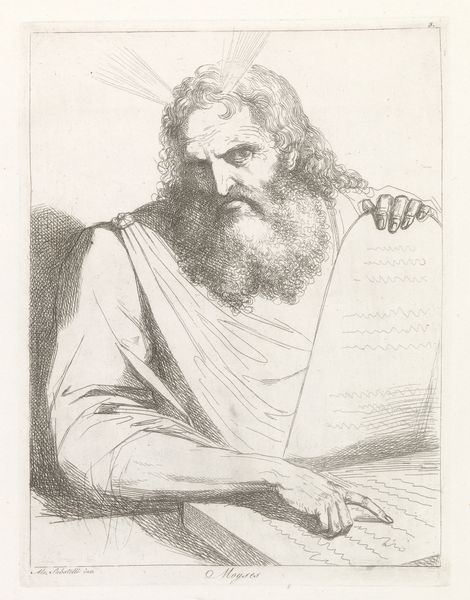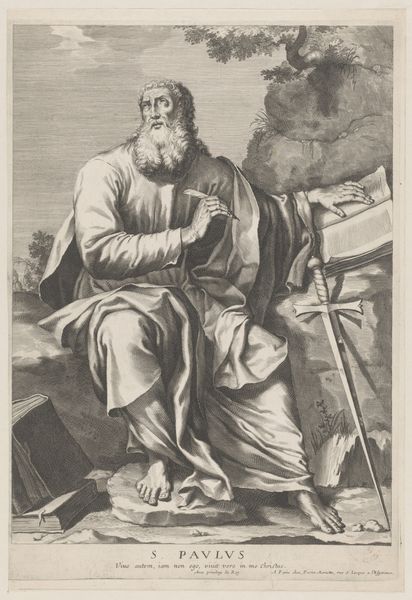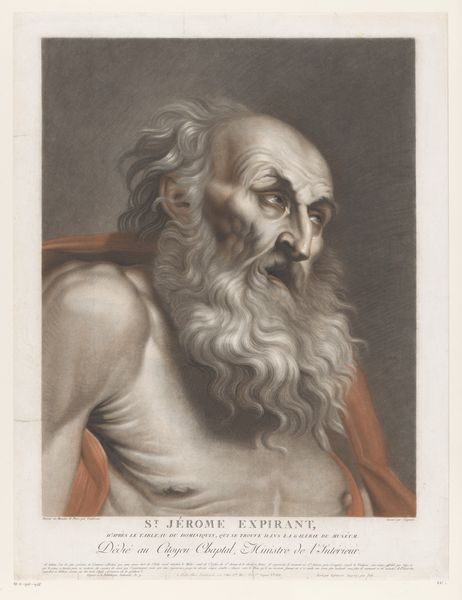
drawing, coloured-pencil
#
portrait
#
drawing
#
coloured-pencil
#
baroque
#
charcoal drawing
#
oil painting
#
chiaroscuro
Dimensions: 514 mm (height) x 378 mm (width) (bladmaal)
Editor: Here we have Karel van Mander III’s “Apostelen Paulus,” created sometime between 1609 and 1670. It's a drawing, made with colored pencil, and I'm immediately struck by the almost photographic realism of the textures, especially in his beard and cloak. How does your understanding of materials and production shape your view of this piece? Curator: The intense chiaroscuro immediately draws my eye, not just as a visual effect, but as a performative one. Think about the labour involved in creating such depth with colored pencils, building up layer upon layer. The tangible effort transforms devotional portraiture. Editor: So you are thinking about devotional portraiture more generally here? Curator: I'm trying to. We can assume this Apostle Paul, produced within a Northern European, probably Dutch, workshop context. I think the rendering, through relatively humble materials, engages directly with a burgeoning market for religious imagery during the Protestant Reformation. Editor: In that case, would you argue the drawing is elevating the 'humble' craft into a type of art object? Curator: Precisely. And isn't that refusal of hierarchy – that disruption of a traditionally valued 'high' art of painting through a focus on artisanal labour – the real radical gesture here? How the piece subverts class based aesthetic values and offers some new social context? The act of creation itself becomes a spiritual act accessible not just to wealthy patrons but to a burgeoning middle class able to produce devotional art at their desk. Editor: I never really thought about art-making from the middle class perspective. Thanks to your explanations, it offers such a distinct meaning to consider craft materials like colored pencils as agents for devotional artistic expression and social disruption during this period. Curator: Exactly! I appreciate how we brought those thoughts and contexts together in a meaningful way.
Comments
No comments
Be the first to comment and join the conversation on the ultimate creative platform.
